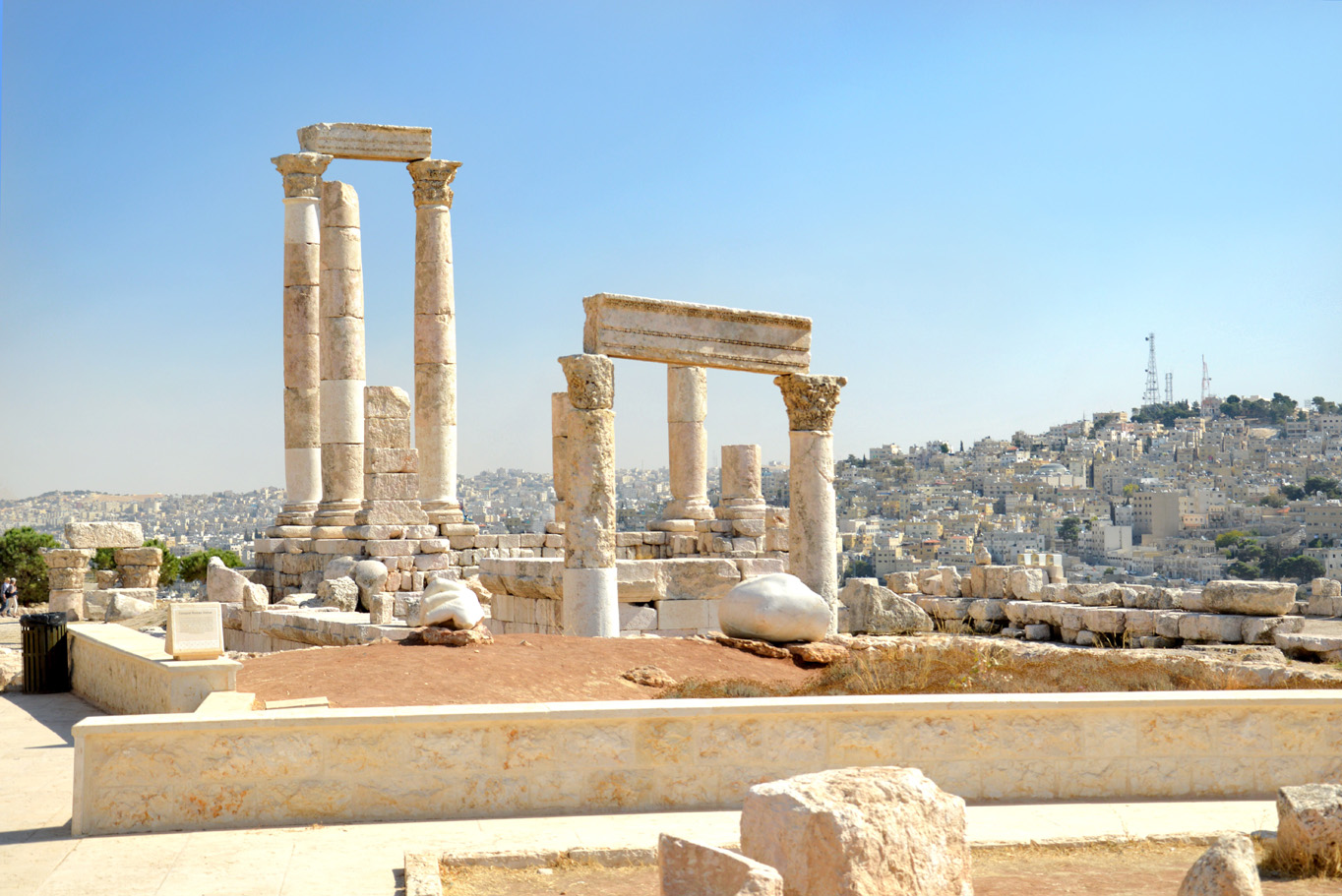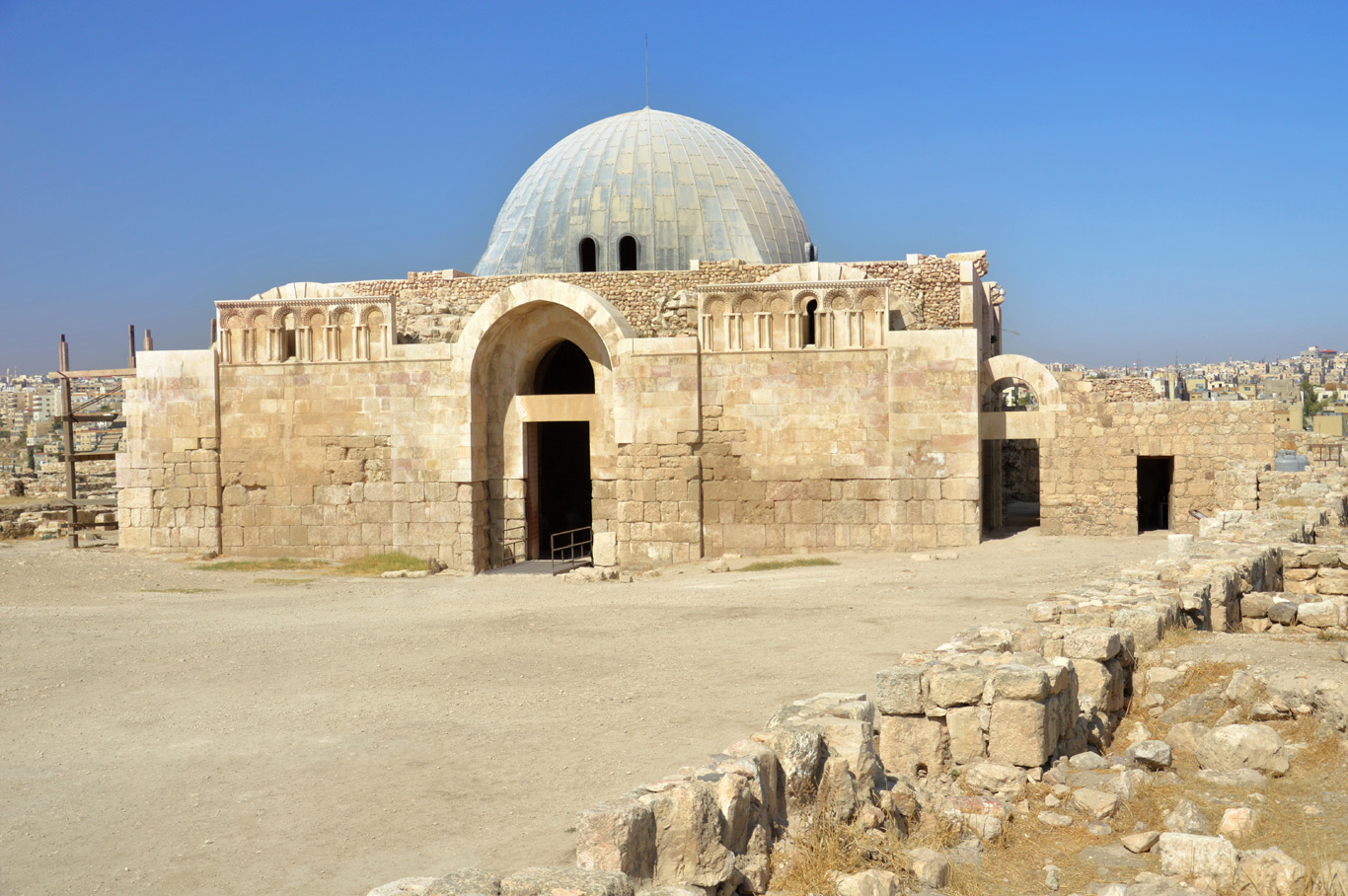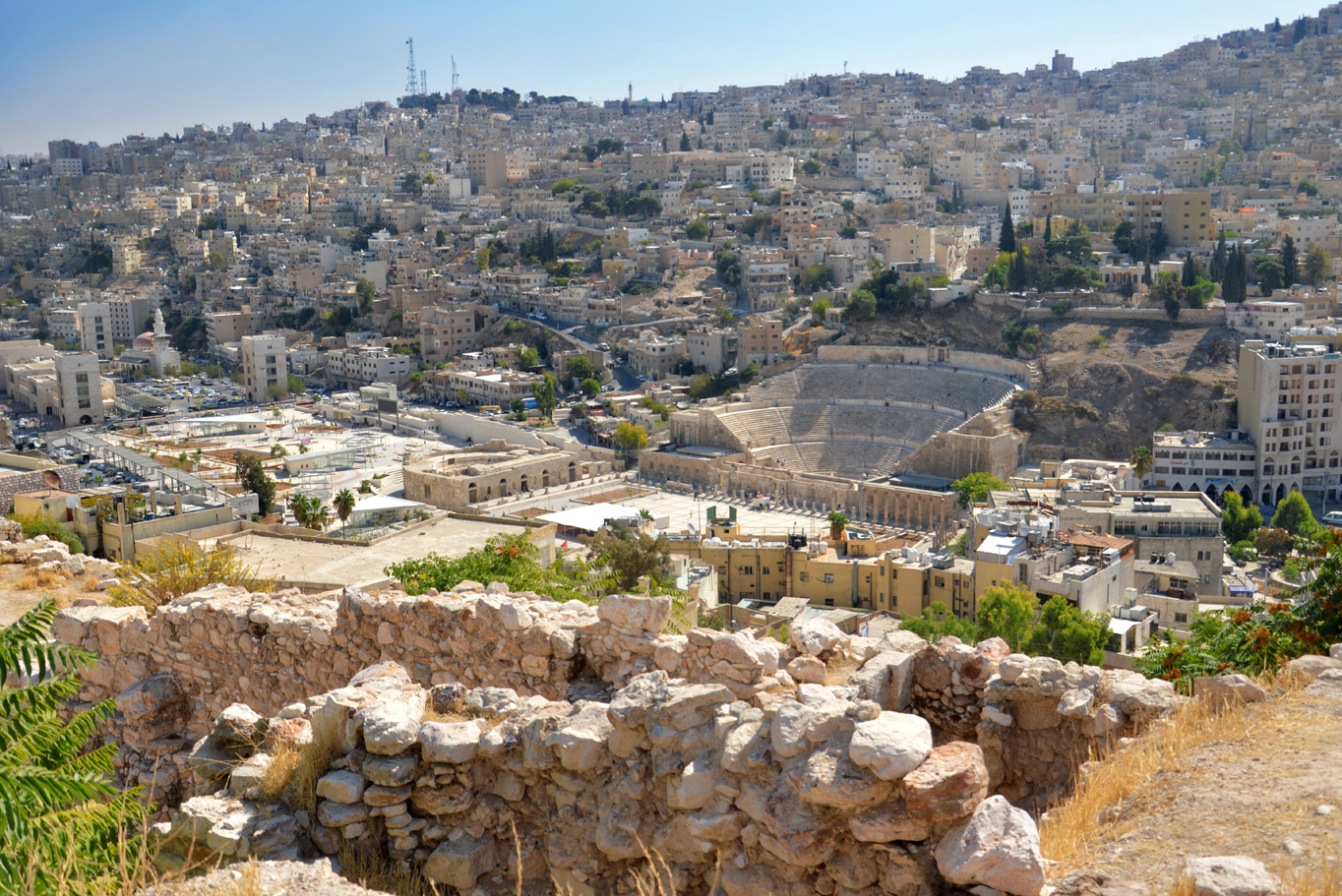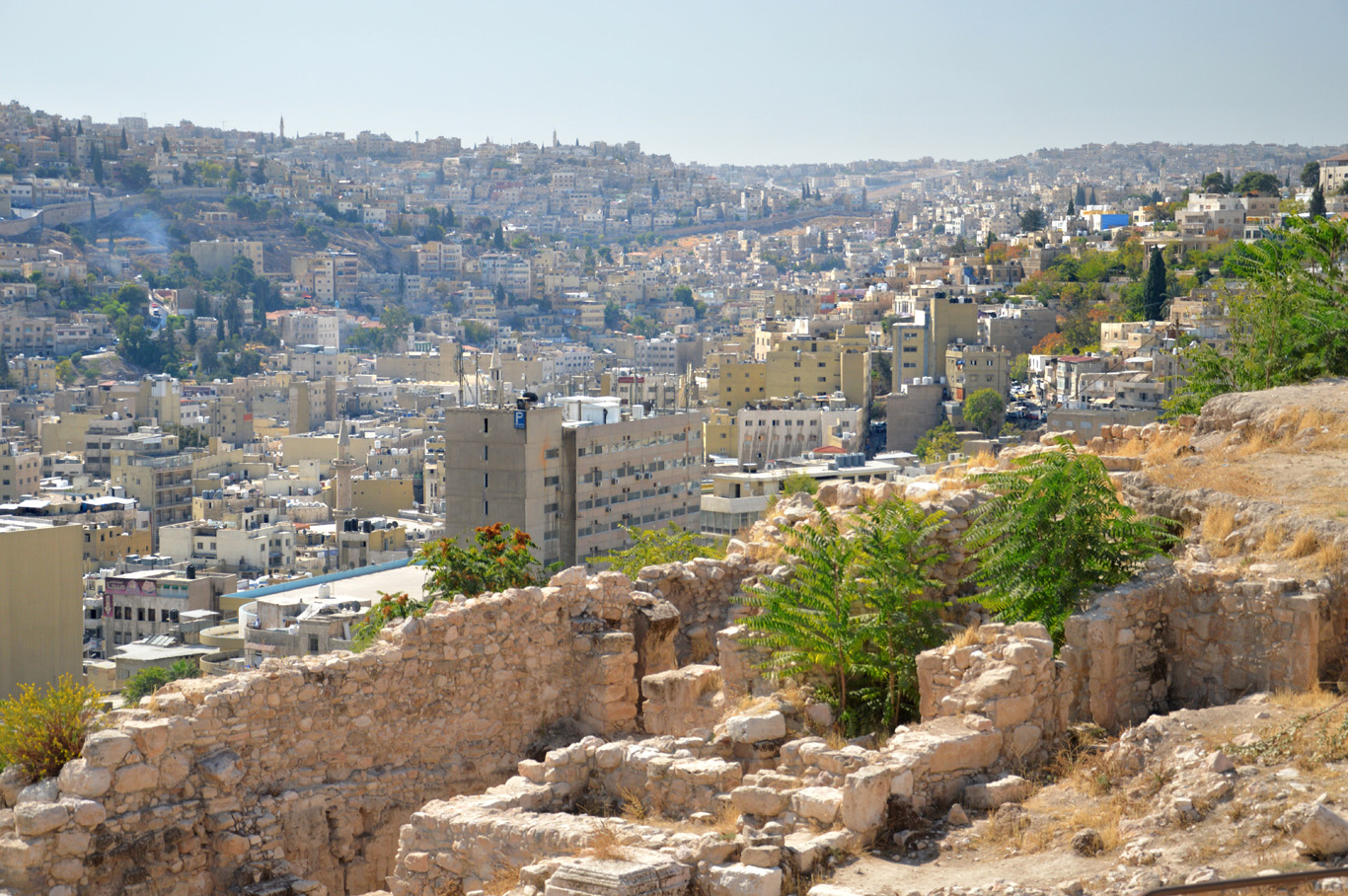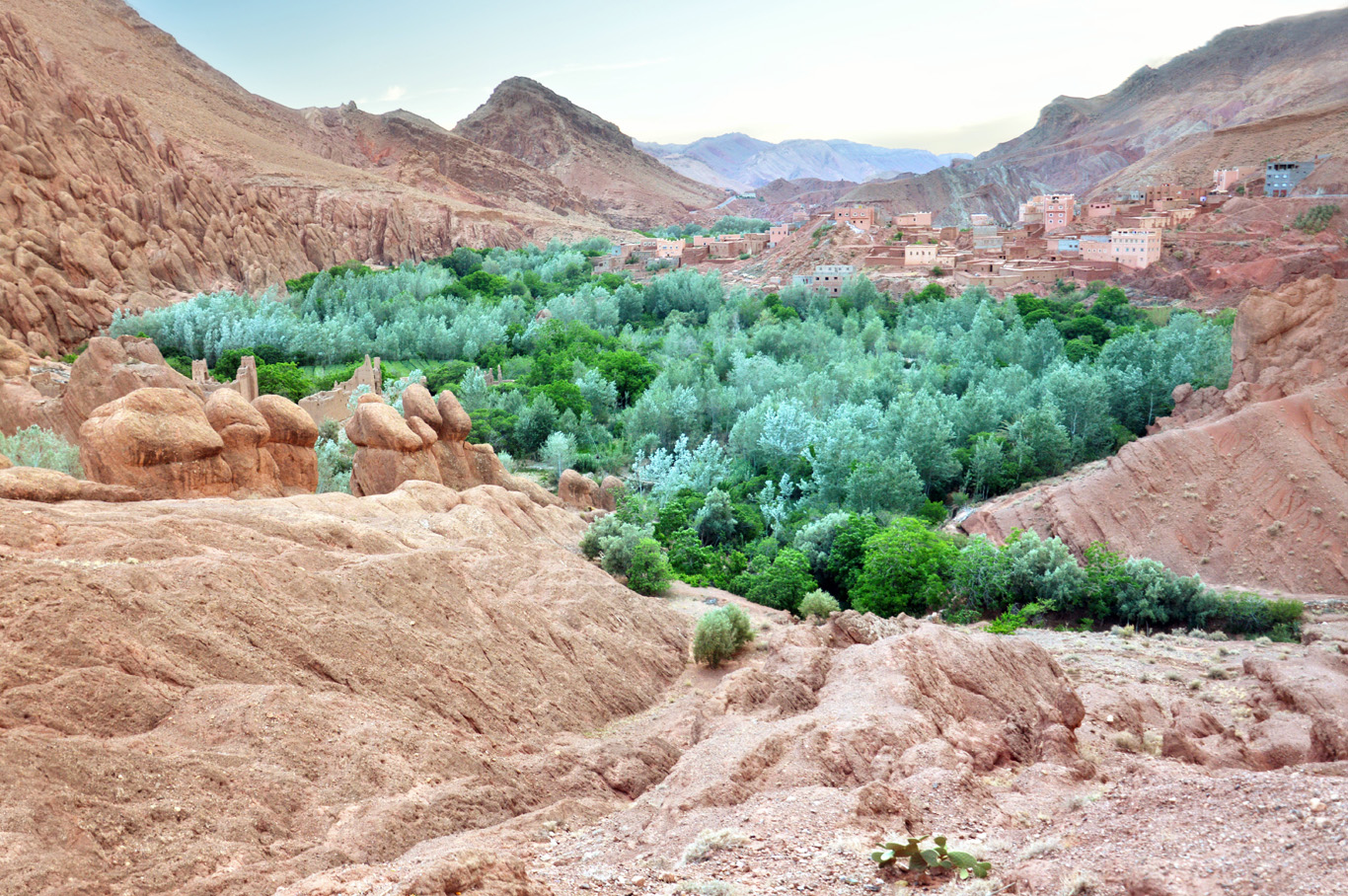Amman is a perfect gateway to the most famous treasures of Jordan - Petra (one of the seven wonders of the ancient world), Dead Sea, Biblical Holy Land - Mount Nebo where Moses died and was buried, Jerash (the best preserved Ancient Roman City - forget Rome!) and Wadi Rum Desert. It is often treated only as a gateway - a place where you transfer to see something else. Underrated and a bit overlooked, Amman may be not the most charming city in the world but it boasts rich history, great architecture and ancient monuments that are still in use today. Although it's skipped by many visitors, it's interesting to see the capital of such a magnificent land as Jordan.
Is it safe to visit Jordan now?
Many people are wondering whether it's safe to visit the Middle East - yes it is, depending where you are traveling, of course. I visited quite a few countries in the Middle East, North Africa and Central Asia and they were all perfectly safe. Jordan is not an exception. Amman, the capital is very safe for tourists as well as the whole country. The biggest concern for visitors is the critical situation in neighboring Syria. However, Jordan is protected very well, especially around the areas close to the border. There is nothing to be afraid of and you can safely travel to Jordan.
Having said that, I must admit that Jordan suffered an enormous loss when it comes to tourism. In the northern areas, around Jerash - once mighty Roman city that boasts the highest number of original, still standing columns, there were literally no other visitors except me and my companions. On one hand, it's nice to experience a place of such importance in silence (unlike in Athens for example which totally lost its ancient feel), on the other, it's really sad that many businesses related to tourism must have been shut down.
Crossing a street in Amman can be a challenge! There are usually no traffic lights and the way of driving is crazy, euphemistically speaking. Prepare yourself for running in between the cars trying to avoid getting hit. This is the only danger you should actually be afraid of in Amman. So, if you ask yourself a question whether you should visit Jordan - just do it! You won't be disappointed!
Temple of Hercules
Ummayad Palace
Roman ruins
Ruins of Byzantine Church
Ancient Water Cistern
Ancient ruins and modern city in the background
Ummayad Palace inside
The Roman Amphitheater
The Amphitheater
The Amphitheater and modern Amman
Roman ruins in downtown Amman
At the amphitheater
Roman ruins in Amman
Amman - view from the citadel
An statue dating back to prehistoric times in Archaeological Museum
Amman - the view from the citadel
Brief history of Amman
Amman had been the capital of Ammonities, an ancient tribe that was described in The Old Testament and occupied the area adjacent to the right side of the Dead Sea. The name was derived from one of Lot's sons - Ammon, who had been born as a result of an incestuous relationship between Lot and his daughter. The tribe turned into a kingdom which was subsequently invaded and conquered by all the nearby empires: Assyrians, Persians, Greek, Nabataean and finally, at the beginning of the 2nd century AD by the Romans. The Romans and Nabataeans lived more or less in harmony, the ancient city of Petra is a proof of the mutual relations of the two nations.
Unfortunately, soon after, the earthquakes that also destroyed Petra, leveled Amman to the ground. It remained as a little settlement among the piles of ruins for nearly 15 centuries. It was brought back to life as late as the 20th century. At first, a small town was built in the area at the rail station linking Damascus and Medina and then it was turned reshaped into a center of the Emirate of Transjordan.
In 1970s Amman suffered turbulent events once more, caused by the clashes between Jordanian Army and Palestine Liberation Organization. The population grew however, also because of high numbers of refugees from the affected areas.
The city was renamed to Amman and became the capital of the newly created country of Jordan. It received a huge number of Iraqis escaping the war that started in 2003. In 2005, the city was shook by the explosions in three hotels, however now the situation is stable and Amman is very safe. It's home to over 4 million people now and is growing financially and economically.
What to see in Amman
Downtown Amman
Amman is huge, from a bird's eye view looks like an endless sea of white buildings flooding the nearby valleys. Although they don't seem perfectly white (due to dust), all buildings in Amman must be painted that color according to the law. While standing on the hill next to the old part of the city (Jabal al Qal'a), you get the impression that you are overlooking one of Rio de Janeiro's favelas, however deprived of colors. But no, it's not favelas and it's not dangerous. Amman can also resemble Athens (not only the ancient monuments but modern parts too), but it's much drier and a bit more dusty. The apartment blocks and houses look like a huge Lego bricks stacked one on top of the other.
Ancient Amman
The architecture in Amman is a mix between modern shopping malls, white, typical for the Middle East apartment blocks and ancient ruins. Some of the ruins are really impressive. On the hill called Jabal al Qal'a (Citadel) there are quite a few things worth seeing: The Temple of Hercules (2nd century BC), the Byzantine Church (6th century), Ummayad Palace (7th century) and Archaeological Museum. The entry fee is only 1 JOD (1.10 EUR, 1.50 USD). Right beside Jabal al Qal'a an impressive amphitheater was erected during Roman times (2nd century AD). There are performances and shows acted out up to this day. Do climb the steep steps, it's nice to admire the size of the amphitheater from the very top.
Shopping and restaurants
There are many shopping malls around, some of them can be quite expensive and extremely modern, no different to those in Europe. I would recommend to visit some of the more local places. The same applies to restaurants and cafes. The more local it is, the food seems to be more genuine, deliciously tasteful and cheaper! Amman has a lot to offer, the cuisine is superb.
Numerous buildings stacked one on top of the other
Modern Amman
Modern Amman
Amman
Modern Amman
Amman - view of the Jabal al Qal'a hill
Financial district of Amman
A street in Amman
A street in modern day Amman
Places near Amman
Jerash
Jerash (second famous tourist attraction after Petra), 50 km (30 miles) north from Amman has the most impressive ruins of a city dating back to Roman times (maybe with the exception of Pompeii and Herculaneum, however those were just little towns). I saw the highest number of truly majestic, unbelievably tall columns that had survived multiple earthquakes and are still standing as witnesses to the long gone grandeur of Jerash.
Madaba and Mount Nebo
Mount Nebo is located 50 km (30 miles) south-west from Amman, halfway to the Dead Sea. It is a site of great religious significance. According to the Bible, it was here where the Holy Land had been shown to Moses. It is also, supposedly, the place where he died and was buried. Madaba, a nearby town is also worth visiting. You can admire a 6th century mosaic depicting the map of the Holy Land in the Greek Orthodox Basilica of Saint George.
Dead Sea
Dead Sea is famous for its high salt concentration and as the lowest point on Earth (nearly 400 m/1310 ft. below the sea level). There are numerous resorts where you can stay. Swimming (or floating) in the Dead Sea is fun as it is literally impossible to drown due to the salt content. You can also use the special Dead Sea mud - completely black in color to apply to your entire body. It contains many minerals and has health benefits. The beaches are 'decorated' by naturally occurring salt crystals that deposit on the rocks.
If you liked this article, you can also download it via the GPSmyCity app - you will be able to gain access to the guide, which will direct you to all the attractions described above, even if you're offline. Download it here.
Have a look at the related posts below for more info and photos about the places near Amman.
Related Posts
Copying without permission is not allowed. If you wish to use any of the site's content (photos or text) or work with us, please contact us.
We welcome questions, advice, support or criticism. However, spam comments will be removed.


